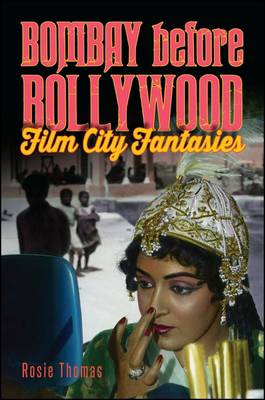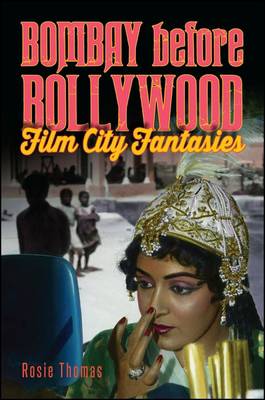
Door een staking bij bpost kan je online bestelling op dit moment iets langer onderweg zijn dan voorzien. Dringend iets nodig? Onze winkels ontvangen jou met open armen!
- Afhalen na 1 uur in een winkel met voorraad
- Gratis thuislevering in België vanaf € 30
- Ruim aanbod met 7 miljoen producten
Door een staking bij bpost kan je online bestelling op dit moment iets langer onderweg zijn dan voorzien. Dringend iets nodig? Onze winkels ontvangen jou met open armen!
- Afhalen na 1 uur in een winkel met voorraad
- Gratis thuislevering in België vanaf € 30
- Ruim aanbod met 7 miljoen producten
Zoeken
Omschrijving
Bombay before Bollywood offers a fresh, alternative look at the history of Indian cinema. Avoiding the conventional focus on India's social and mythological films, Rosie Thomas examines the subaltern genres of the "magic and fighting films"--the fantasy, costume, and stunt films popular in the decades before and immediately after independence. She explores the influence of this other cinema on the big-budget masala films of the 1970s and 1980s, before "Bollywood" erupted onto the world stage in the mid-1990s.
Thomas focuses on key moments in this hidden history, including the 1924 fairy fantasy Gul-e-Bakavali; the 1933 talkie Lal-e-Yaman; the exploits of stunt queen Fearless Nadia; the magical neverlands of Hatimtai and Aladdin and the Wonderful Lamp; and the 1960s stunt capers Zimbo and Khilari. She includes a detailed ethnographic account of the Bombay film industry of the early 1980s, centering on the beliefs and fantasies of filmmakers themselves with regard to filmmaking and film audiences, and on-the-ground operations of the industry. A welcome addition to the fields of film studies and cultural studies, the book will also appeal to general readers with an interest in Indian cinema.
Thomas focuses on key moments in this hidden history, including the 1924 fairy fantasy Gul-e-Bakavali; the 1933 talkie Lal-e-Yaman; the exploits of stunt queen Fearless Nadia; the magical neverlands of Hatimtai and Aladdin and the Wonderful Lamp; and the 1960s stunt capers Zimbo and Khilari. She includes a detailed ethnographic account of the Bombay film industry of the early 1980s, centering on the beliefs and fantasies of filmmakers themselves with regard to filmmaking and film audiences, and on-the-ground operations of the industry. A welcome addition to the fields of film studies and cultural studies, the book will also appeal to general readers with an interest in Indian cinema.
Specificaties
Betrokkenen
- Auteur(s):
- Uitgeverij:
Inhoud
- Aantal bladzijden:
- 346
- Taal:
- Engels
- Reeks:
Eigenschappen
- Productcode (EAN):
- 9781438456768
- Verschijningsdatum:
- 1/03/2015
- Uitvoering:
- Paperback
- Formaat:
- Trade paperback (VS)
- Afmetingen:
- 142 mm x 216 mm
- Gewicht:
- 453 g

Alleen bij Standaard Boekhandel
+ 112 punten op je klantenkaart van Standaard Boekhandel
Beoordelingen
We publiceren alleen reviews die voldoen aan de voorwaarden voor reviews. Bekijk onze voorwaarden voor reviews.











